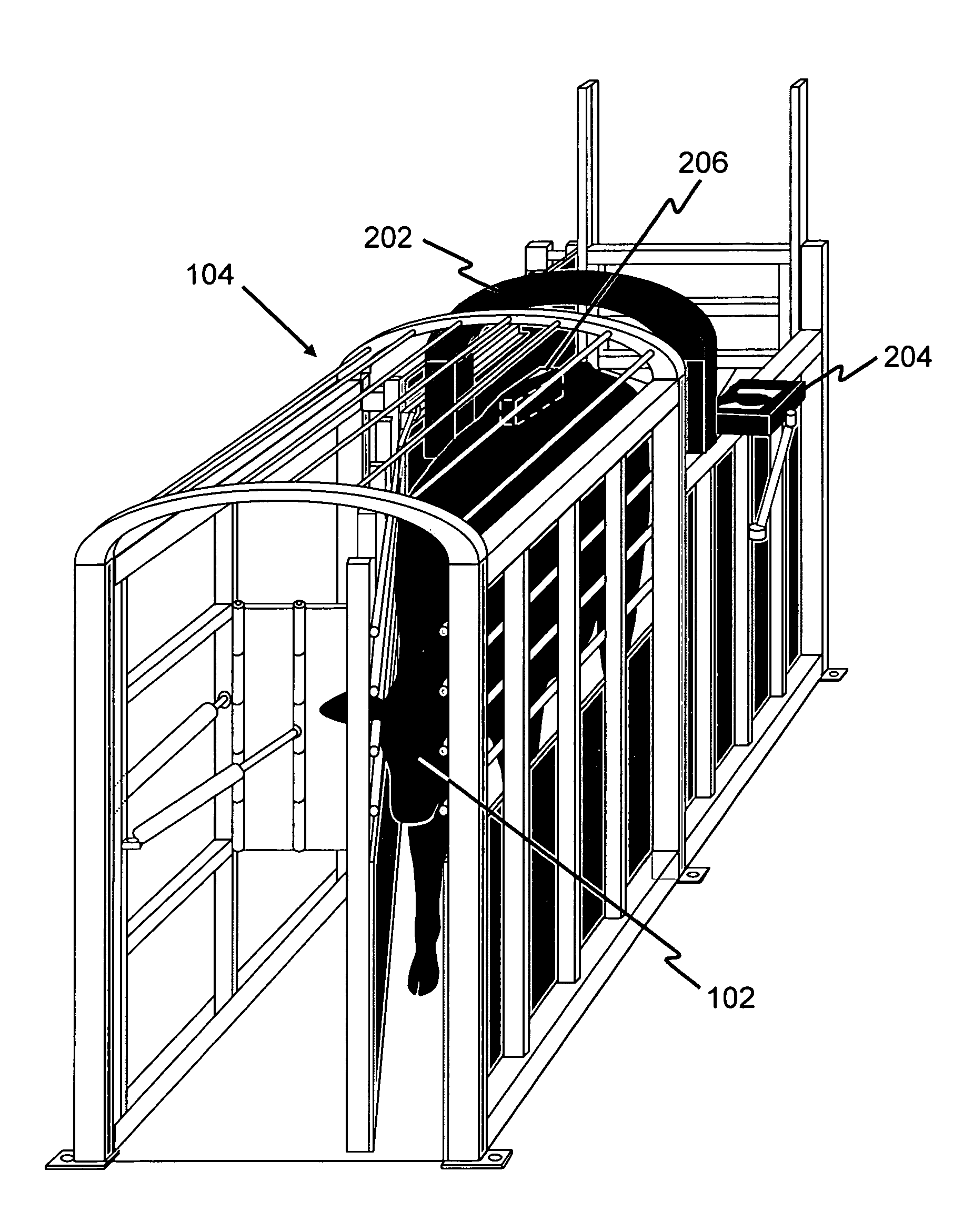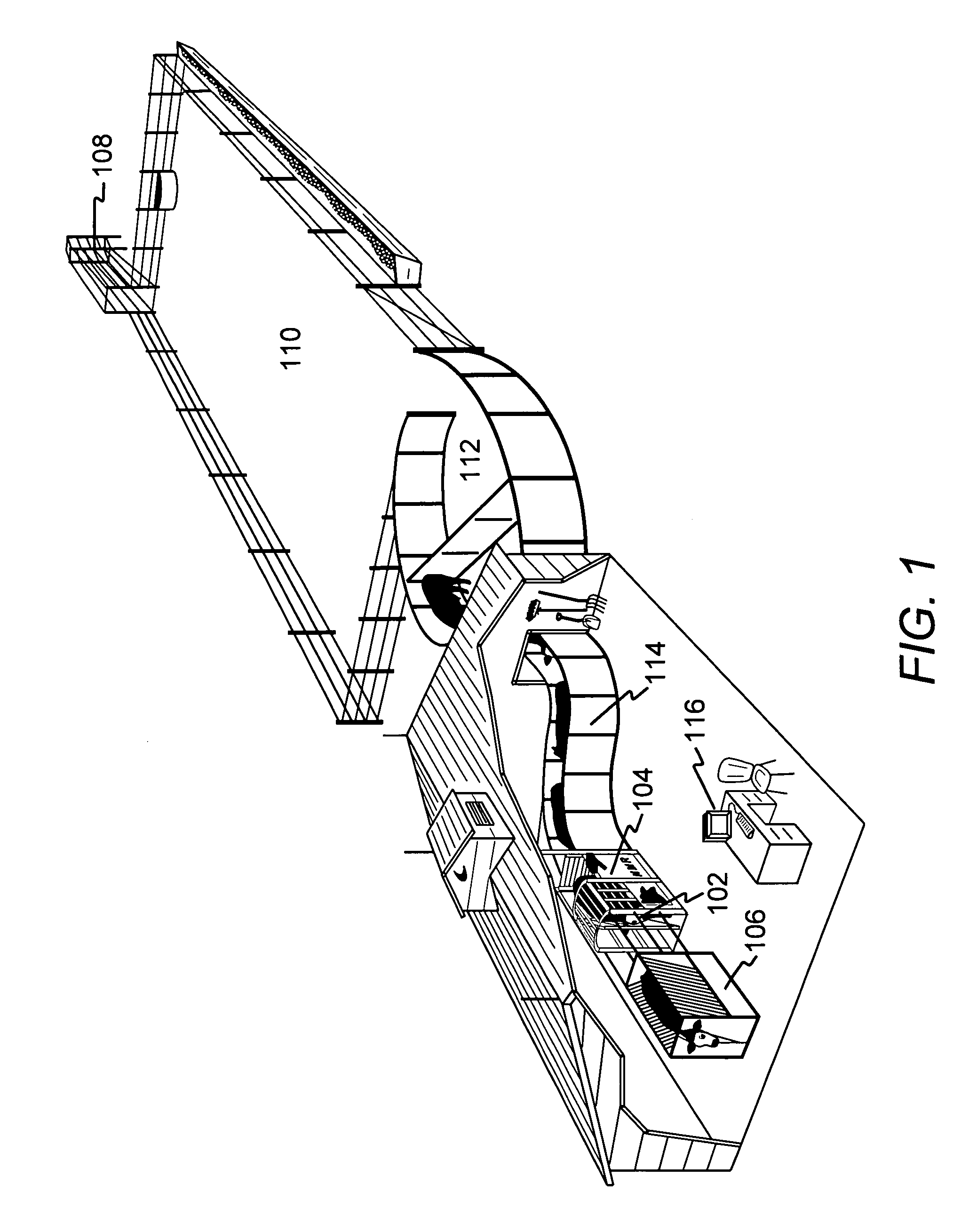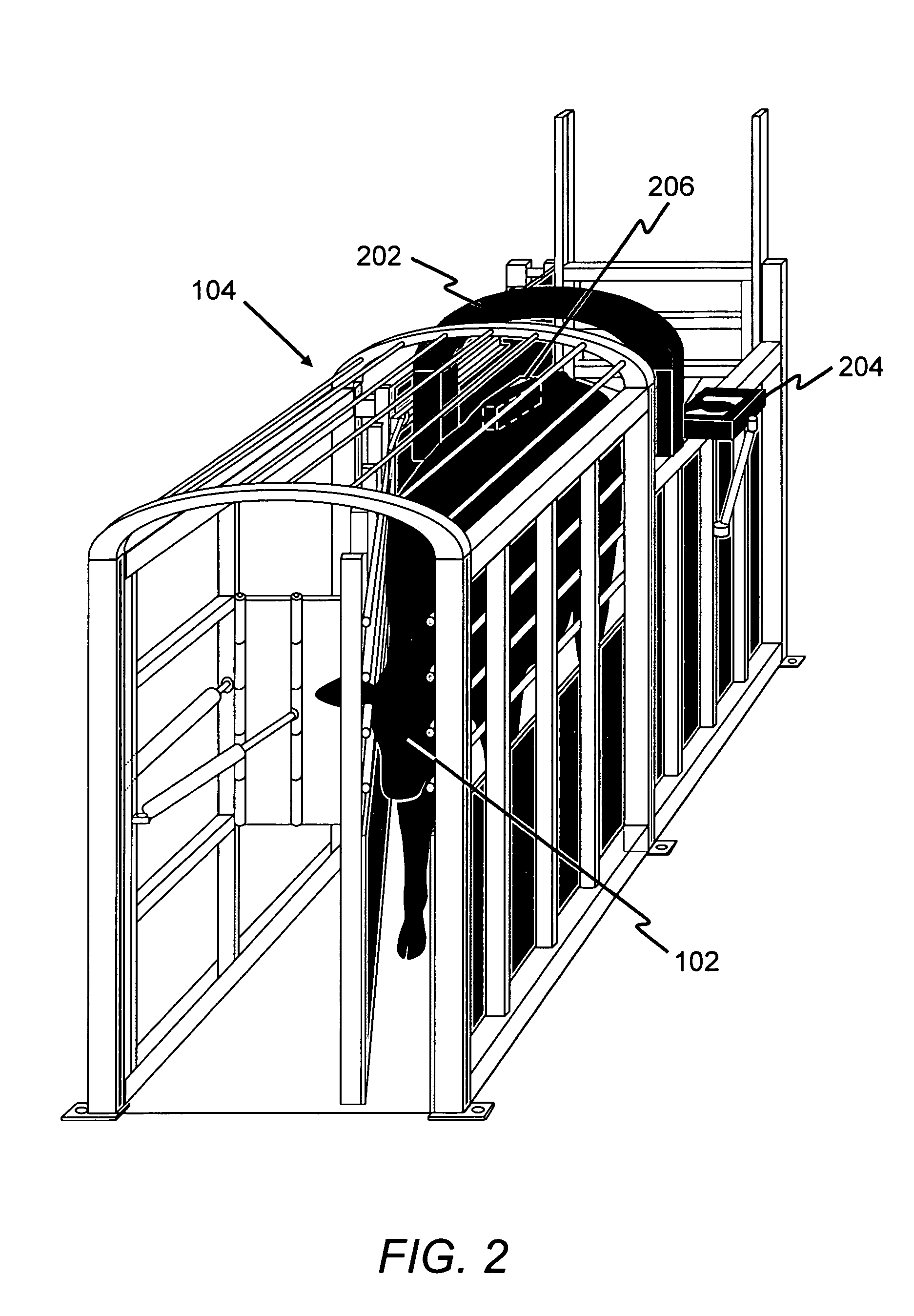Animal sorting and grading system using an internal evaluation to predict maximum value
a technology of internal evaluation and animal sorting, applied in the field of animal sorting and grading system using internal evaluation to predict maximum value, can solve the problems of not finding the correct 30 animals, receiving reduced prices called yield grade discounts, and being too fat, so as to reduce the dollar lost and accurately measure
- Summary
- Abstract
- Description
- Claims
- Application Information
AI Technical Summary
Benefits of technology
Problems solved by technology
Method used
Image
Examples
Embodiment Construction
[0044]The following description is of the best presently contemplated mode of carrying out the present invention. This description is not to be taken in a limiting sense but is made merely to describe the general principles of the invention. The scope of the invention should be determined by referencing the appended claims.
[0045]Cattle are sorted into groups in the feedlot segment of the beef industry with a computer system by predicting a timeframe in which each animal will reach a desired maximum value. The timeframe, commonly called “days on feed”, is the number of days from the date that the animal enters the feedlot until the date that animal reaches a desired maximum value. The desired maximum value or Predicted Days to Maximum Value (PDMV) in the feedlot segment is when that animal is referred to as “finished”. Finished is a term used that indicates that the animal has reached full potential carcass value. This means the animal has been feed the optimum number of days to maxi...
PUM
 Login to View More
Login to View More Abstract
Description
Claims
Application Information
 Login to View More
Login to View More - R&D
- Intellectual Property
- Life Sciences
- Materials
- Tech Scout
- Unparalleled Data Quality
- Higher Quality Content
- 60% Fewer Hallucinations
Browse by: Latest US Patents, China's latest patents, Technical Efficacy Thesaurus, Application Domain, Technology Topic, Popular Technical Reports.
© 2025 PatSnap. All rights reserved.Legal|Privacy policy|Modern Slavery Act Transparency Statement|Sitemap|About US| Contact US: help@patsnap.com



